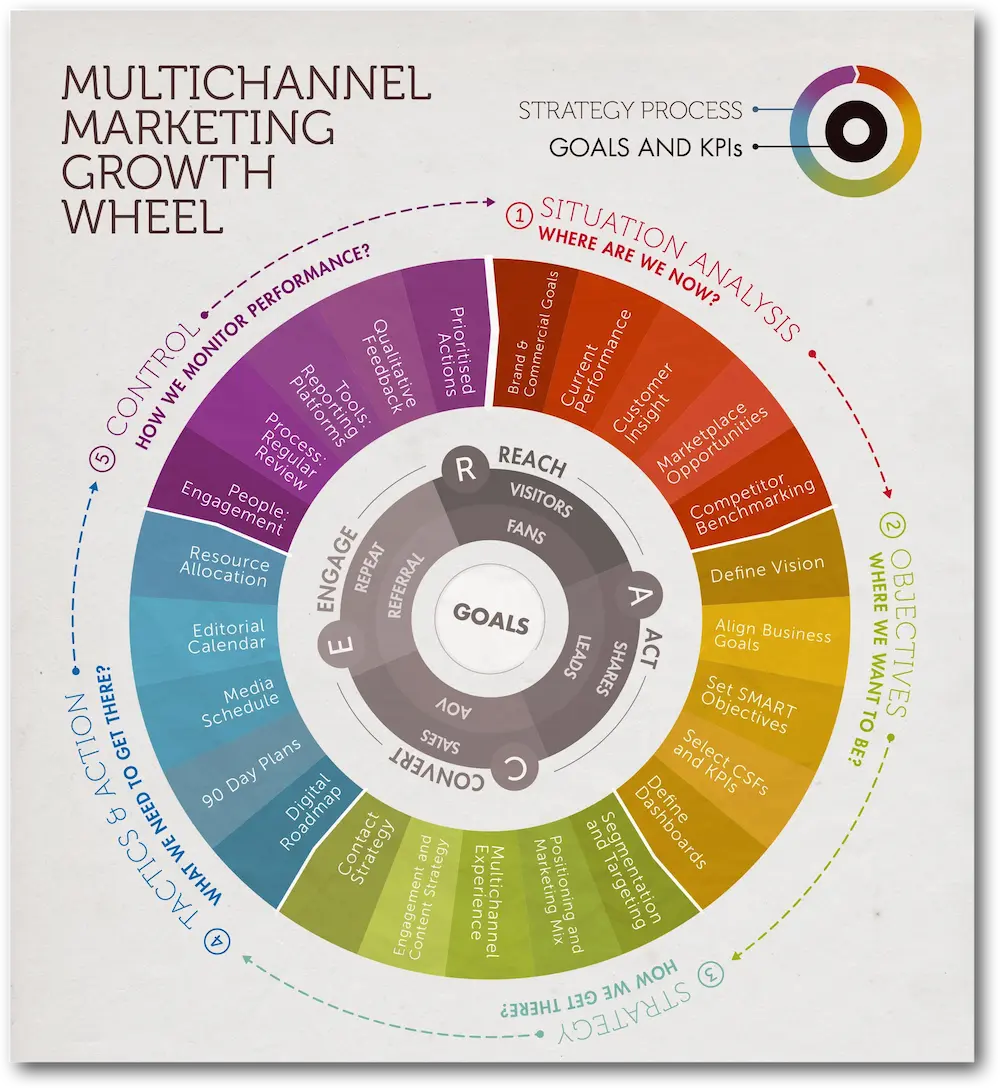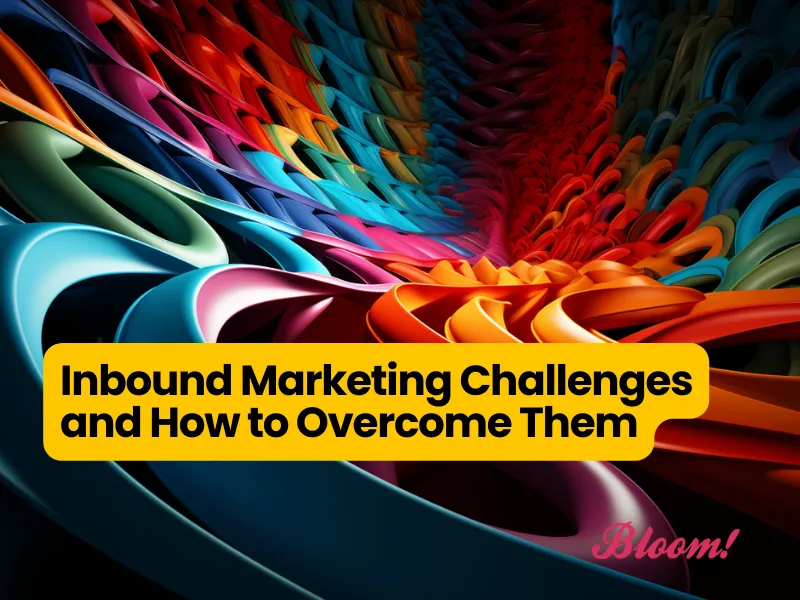Confused by BAU?
When collaborating with marketing specialists, you might come across a bunch of fancy words and abbreviations. Marketers really like to use shortcuts! But here’s the thing: if you’re starting to work with marketing professionals or running a small business and handling lots of different tasks, it can be easy to forget what these marketing terms mean.
That’s why we’ve created our useful inbound marketing glossary. It’s your glossary of terms to use whenever you encounter something you don’t recognize. Throughout this article, you’ll find examples and links that will help you understand important marketing acronyms.
AM (Account Manager)
A role in management that could be part of your internal team. Account Managers work closely with account holders and have the responsibility of keeping clients satisfied and engaged.
AOV (Average Order Value)
A measure of the typical revenue earned from each purchase made at your company. It’s calculated by dividing the total revenue generated during a specific period (typically one year) by the number of orders placed in that same period.
B2B (Business-to-Business)
Refers to the practice of one business selling its products or services to another business.
B2C (Business-to-Customer)
This is when a business sells its products or services directly to individual customers. Some well-known B2C companies include Coca-Cola, Target, McDonald’s, and Apple.
BAU (Business as Usual)
When you’re organizing your weekly or monthly tasks, you might include some routine activities that are regularly carried out and are not related to specific projects. These routine tasks are referred to as ‘business as usual’.
BR (Bounce Rate)
Bounce rate is a metric that measures user engagement with your webpages. It represents the percentage of visitors who exit your website after viewing only one page.
BOFU (Bottom of Funnel)
This term describes the stage in the sales funnel where potential customers are positioned. People at the bottom of the funnel have typically engaged extensively with your messaging and are prepared to make a purchase.
CPA (Cost per Acquisition)
The overall expenditure associated with gaining a new customer through a particular marketing channel or campaign. This metric is often used in consumer product sales, where a user is regarded as a ‘potential customer’ rather than a ‘lead’ who has provided contact information and expressed interest in your services.
CPC (Cost per Click)
A metric used in paid advertising to assess the average expense incurred for each click on a specific ad.
CPI (Cost per impression)
Cost per impression is a metric used in Digital marketing to measure the cost associated with the number of impressions made.
CPL (Cost per Lead)
The overall expense associated with obtaining a new lead through a specific marketing channel or campaign.
CMS (Content Management System)
A tool or platform employed to handle and deliver digital content for your website or social media profiles.
CPM (Cost per Thousand Impressions)
Represented as ‘cost per mille,’ this measures the expense associated with delivering 1,000 impressions for a specific webpage. It’s calculated by dividing the total campaign cost by the total number of impressions received for a page (divided by 1,000).
CPS (Cost per Sale)
The typical expenditure required to generate a sale for your business. To determine your CPS, divide your total costs by your total number of sales.
CR (Conversion Rate)
The proportion of potential customers who take a desired action (such as making a purchase) compared to the total number of people who had the opportunity to do so (such as viewing the product).
CRM (Customer Relationship Management)
CRM involves the tools and procedures employed to monitor your interactions with customers. This involves handling complaints and inquiries, and you may have a designated Account Manager to nurture relationships with valuable customers or accounts.
CRO (Conversion Rate Optimization)
The practice of enhancing your website to boost your conversion rate.
CSAT (Customer Satisfaction)
A concept associated with research that assesses the level of happiness or fulfillment among your customers regarding your brand, products, or services. For instance, you might conduct a CSAT survey with a group of customers, asking them how you can enhance their experience with your brand.
CTA (Call to Action)
A statement designed to inspire a specific action from the reader. Examples include ‘purchase now,’ ‘get free trial,’ and ‘check it out.’
CTR (Clickthrough Rate)
The percentage of people who are presented with a link to your website and choose to click on it. It is commonly used to gauge the effectiveness of PPC and email campaigns.
CX (Customer Experience)
Examples of services you could offer to enhance your customer experience include welcome emails, loyalty programs, and troubleshooting assistance.
CVJ (Customer Value Journey)
Customer Value Journey outlines the gradual transformation of complete strangers into high-value customers and advocates, taking inspiration from the dynamics of human relationships. Diverging from the conventional marketing funnel, it introduces additional stages that not only create a more organic progression of interactions but also foster alignment between the organization and customers, focusing on mutual success.
ESP (Email Service Provider)
The platform used by marketers to manage, create, and analyze email campaigns. Examples include Mailchimp and Active Campaign.
IMA (Inbound Marketing Agency)
An inbound marketing agency is a specialized company that excels in crafting and executing inbound marketing strategies tailored to businesses. Inbound marketing, a facet of digital marketing, centers on drawing in customers through the creation of valuable content and personalized experiences aligned with their needs and interests. This approach stands in contrast to traditional outbound marketing, which relies on interruptive tactics, bombarding people with unsolicited messages.
GA (Google Analytics)
A web analytics tool developed by Google for viewing data and insights about your website.
GDPR (General Data Protection Regulation)
This is the European Union’s legal framework for data protection and privacy, governing these aspects within the EU.
GDN (Google Display Network)
A network of websites where you can display advertisements created for your business. With the GDN, you can craft image or video ads and place them on websites that align with the interests of your desired audience.
GSC (Google Search Console)
A tool developed by Google to assist you in monitoring your website’s performance within Google search results.
KPI (Key Performance Indicator)
A specific metric that you highlight as crucial to a particular campaign or project, such as total revenue, sales of a specific product, or growth in social media followers.
LTV (Lifetime Value)
A customer’s lifetime value represents the estimated revenue your company can expect throughout the entire duration of their relationship with your business. This calculation takes into account the potential for multiple purchases and recurring revenue from individual customers, and it is frequently employed in B2B companies.
MOFU (Middle of Funnel)
This term describes the stage within the sales funnel where potential customers are positioned. People in the middle of the funnel have acquired information about your company but may not yet be prepared to make a purchase.
MoM (Month on Month)
This term is used when you analyze data monthly and compare it to previous months to observe changes. For instance, this could involve tracking monthly product sales.
MQL (Marketing-Qualified Lead)
Leads who have engaged with your marketing efforts by taking actions that your business regards as signs of interest in your products or services. These actions may include clicking on a sales call-to-action (CTA), providing contact information through an online form, or repeatedly visiting your website.
MTD (Month to Date (MTD)
A period that begins at the start of the calendar month and continues until the current date. For example, in a sales context, when people discuss their revenue ‘month to date,’ they are referring to the total sales they’ve achieved within the current month up to and including today’s date.
NPS (Net Promoter Score)
A metric used to measure customer loyalty towards a company’s brand, products, or services. Customers rate the company on a scale from zero to ten, and the NPS is then calculated based on their responses.
P&L (Profit and Loss)
The profit and loss statement is a financial document that summarizes a company’s revenues, costs, and expenses over a specific period, typically one year.
PM (Project Manager)
A management role that can be found within your internal departments. Project Managers are tasked with the planning and successful execution of marketing projects.
PPC (Pay per Click)
A form of paid advertising where a cost is associated with each click on an advertisement. Examples of this include sponsored ‘Ad’ listings displayed at the top of Google search results.
PR (Public Relations)
Any form of communication or marketing intended to foster a connection between an individual or organization and the public.
ROAS (Return on Ad Spend)
A marketing metric that evaluates the effectiveness of advertising by comparing the sales generated to the associated advertising costs. It serves to assess the performance of ads, media channels, platforms, and more.
ROFU (Retention in Funnel)
This relates to your sales funnel and the strategy of keeping customers who have made purchases so that they are motivated to buy additional products, often through recommendations.
ROI (Return on Investment)
A calculation used to measure the profitability of an investment. It involves subtracting the budget spent on launching or running an activity or campaign from the total revenue generated by that activity or campaign to determine the ROI.
ROMI (Return on Marketing Investment )
Occasionally used interchangeably with ROI, ROMI is a more precise measure focusing on the return in relation to the budget allocated specifically to marketing expenses, excluding broader costs like platform fees.
SaaS (Software as a Service )
This is a business model where the primary product provided to customers is access to a software solution, such as Microsoft Office or Adobe Creative Suite.
SEM (Search Engine Marketing)
This typically includes marketing efforts related to search engines, such as organic SEO and paid search ads. However, some may exclusively use it to describe Pay Per Click activities, so it’s wise to clarify the context when discussing SEM.
SEO (Search Engine Optimization)
SEO is a systematic and strategic approach used to enhance a company’s ranking in a search engine’s organic search results for targeted keywords. Its objective is to boost visibility and attract both new prospects and existing customers to a website. SEO involves ‘on-page’ activities, which improve the quality of content, and ‘off-page’ activities, which enhance the quality of links pointing to the content.
SERP (Search Engine Results Page)
The page that Google shows in response to a search query.
SLA (Service Level Agreement)
This is a formal commitment between a service provider and a client, often outlining various aspects of the service, including performance standards and consequences for failing to meet the agreement’s terms. A familiar example of an SLA is the contract you have with your internet service provider.
SMART (Specific, Measurable, Attainable, Relevant, Timely)
A framework for setting well-defined objectives. Instead of establishing broad company-wide goals like ‘increase traffic’ or ‘enhance revenue,’ ensure that your goals are:
Specific: The goal pertains to a particular channel, product, or customer segment, rather than being overly general.
Measurable: There are key performance indicators (KPIs) in place to gauge whether the goal has been achieved or not.
Attainable: Your goal is within reach and can be realistically accomplished given your available resources and capabilities.
Relevant: The goal is directly aligned with your business and its customer base.
Timely: Your goal has a defined time or deadline.
SMB (Small-to-Medium Business)
A company whose revenue, assets, or workforce is below a particular threshold. The classification of an ‘SMB’ can vary among industries and countries but typically refers to a business with fewer than 250 employees. It is also occasionally referred to as a ‘Small-to-Medium Enterprise’ (SME).
SMM (Social Media Marketing)
Marketing activities that leverage social media platforms, including but not limited to TikTok, Facebook, X (Twitter), LinkedIn, Snapchat, Pinterest, and Instagram.
SOSTAC (Situation, Objectives, Strategy, Tactics, Action, Control)
A digital marketing strategy framework developed by PR Smith.

SQL (Sales-Qualified Lead)
A lead that has been assessed and qualified by the sales team. This qualification may result from the lead’s visit to a high-value page or their request for a product demo. While ‘marketing-qualified leads’ (MQLs) are prospects conducting initial research, SQLs are customers who have progressed to the buying stage of their journey.
SWOT
A framework for conducting a comprehensive situation analysis of your business. It involves identifying your strengths and weaknesses, followed by the exploration of available opportunities and potential threats you need to address.
TOFU (Top of Funnel)
This term describes the stage in the sales funnel where potential customers are situated. People at the top of the funnel are aware of your brand but are still in the process of learning about it and are not yet prepared to make a purchase.
USP (Unique Selling Proposition)
The defining characteristic that you believe sets your brand apart from your competitors.
UV (Unique Visitor)
When you review your website analytics, you’ll come across two key metrics: ‘page views’ and ‘unique visitors.’ ‘Page views’ represent the total number of times a page has been viewed, but it’s important to note that the same person can visit your site multiple times in a day. ‘Unique visitors,’ on the other hand, provides a more accurate count of the distinct individuals who have visited your site.
VPL (Value per Lead)
An estimation of how much a lead is worth to your company if they convert into a customer. This figure can be calculated by dividing the total revenue generated by closed leads by the number of closed leads.
YoY (Year on Year)
Analyzing data on an annual basis and comparing it to the preceding years to observe changes. For instance, you might examine your website’s revenue from 2020 to 2023.
YTD (Year to Date)
A period that begins at the start of the current calendar year and continues up to the present date. In sales discussions, you might hear individuals referring to their ‘year to date’ revenue, which represents the total sales they’ve achieved from the beginning of the year up to the current date.




